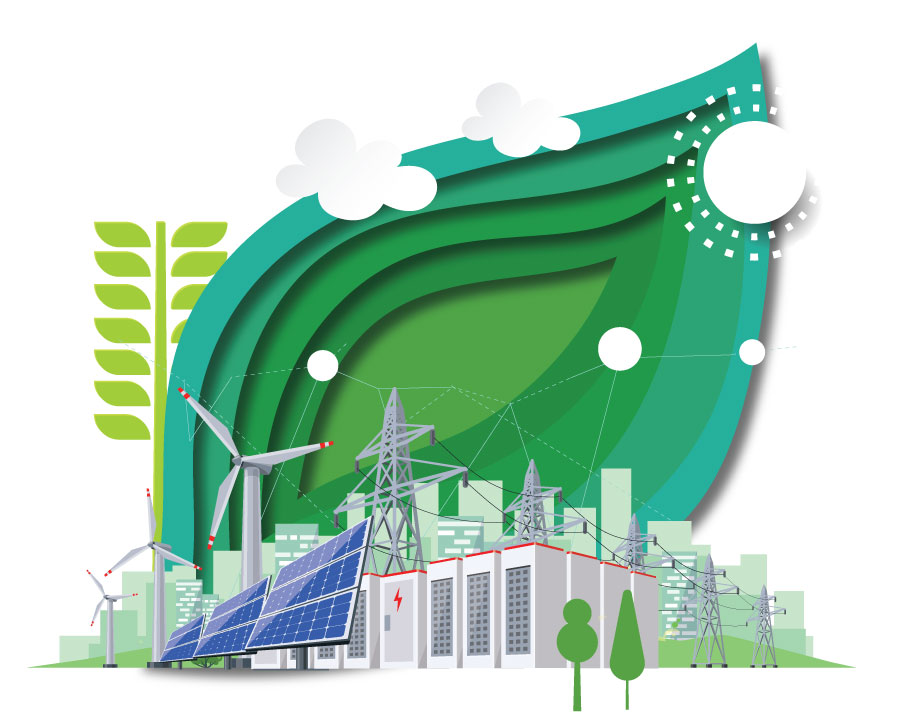Energy Blog: Heat Pumps Ahead?
Energy Blog: Heat Pumps Ahead?


New research touts the benefits of heat pumps amid additional government funding.
Funds are flowing into the development of electric heat pumps across the United States. Building off a first round of $169 million to manufacturers of heat pumps and components in November 2023, the Department of Energy announced a second round of $63 million on February 14, which will help grow domestic manufacturing of residential heat pumps, heat pump water heaters, and other heat pump systems and components.
The agency noted in its announcements that electric heat pumps emit up to 50 percent fewer greenhouse gas emissions than condensing gas boilers and could grow to 75 percent by 2030.
However, researchers at the National Renewable Energy Laboratory (NREL) released a new study showing that while the benefits of heat pumps are solid, installation costs can be prohibitive. In a paper published on February 12 in Joule, “Heat pumps for all? Distributions of the costs and benefits of residential air-source heat pumps in the United States,” the NREL team found that 62 percent to 95 percent of American households would see a drop in energy bills with the use of a heat pump. When combined with better weatherization, that range reaches 82 percent to 97 percent.
ASME Infographic: How Heat Pumps Work
As for energy savings, the researchers found that heat pump usage would reduce home site energy use by an average of 31 percent to 47 percent. Of the 49 million homes that use electricity, fuel oil, or propane for heat and have air conditioning, NREL found that 92 percent to 100 percent of those homes would see energy bill savings in the median range of $300 to $650 a year—depending on heat pump efficiency.
With higher up-front costs, an air-to-air heat pump rollout could be more cost-effective without subsidies for 65 million households, or about 59 percent, according to the report.
“There are millions of people who would benefit from putting in heat pumps, and there are incentives made available through the Inflation Reduction Act, both tax credits and rebates, that millions of households can benefit from,” said Eric Wilson, a senior research engineer in the Buildings Technologies and Science Center at NREL and lead author of the paper in an announcement. “But what this paper shows is that there are still millions more households for whom the technology is still pretty expensive, and we need work to bring down the cost of installing heat pumps.”
Become a Member: How to Join ASME
But electric air-to-air heat pumps aren’t the only ones—installation of geothermal heat pumps in about 70 percent of U.S. buildings could save as much as 593 terawatt-hours of electricity generation a year—or 15 percent of current annual U.S. electricity demand—and cut 7 gigatons of carbon-equivalent emissions by 2050, according to recent research out of NREL and Oak Ridge National Laboratory (ORNL).
"Geothermal heat pumps—also called ground-source heat pumps, or geo-exchange—use the relatively constant temperature of Earth's subsurface to heat and cool, which is highly efficient," said Amanda Kolker, NREL geothermal laboratory program manager, in a statement. "Widespread adoption of this resilient and mature technology could enable us to decarbonize the building sector with minimal increases in electricity demand. They can be installed at multiple scales, decarbonizing individual buildings or networks of buildings."
It could also mean avoiding the need for even more transmission lines. The research team found widespread geothermal heat pump installations could help avoid the need for 24,500 miles of new grid transmission lines as a result of geothermal energy’s reduced generation capacity, storage, and transmission. This kind of impact would also provide benefits to consumers who are unable to install their own geothermal heat pumps.
With the right incentives, perhaps a wave of heat pump installations could be on the horizon.
Louise Poirier is senior editor.
The agency noted in its announcements that electric heat pumps emit up to 50 percent fewer greenhouse gas emissions than condensing gas boilers and could grow to 75 percent by 2030.
However, researchers at the National Renewable Energy Laboratory (NREL) released a new study showing that while the benefits of heat pumps are solid, installation costs can be prohibitive. In a paper published on February 12 in Joule, “Heat pumps for all? Distributions of the costs and benefits of residential air-source heat pumps in the United States,” the NREL team found that 62 percent to 95 percent of American households would see a drop in energy bills with the use of a heat pump. When combined with better weatherization, that range reaches 82 percent to 97 percent.
ASME Infographic: How Heat Pumps Work
As for energy savings, the researchers found that heat pump usage would reduce home site energy use by an average of 31 percent to 47 percent. Of the 49 million homes that use electricity, fuel oil, or propane for heat and have air conditioning, NREL found that 92 percent to 100 percent of those homes would see energy bill savings in the median range of $300 to $650 a year—depending on heat pump efficiency.
With higher up-front costs, an air-to-air heat pump rollout could be more cost-effective without subsidies for 65 million households, or about 59 percent, according to the report.
“There are millions of people who would benefit from putting in heat pumps, and there are incentives made available through the Inflation Reduction Act, both tax credits and rebates, that millions of households can benefit from,” said Eric Wilson, a senior research engineer in the Buildings Technologies and Science Center at NREL and lead author of the paper in an announcement. “But what this paper shows is that there are still millions more households for whom the technology is still pretty expensive, and we need work to bring down the cost of installing heat pumps.”
Become a Member: How to Join ASME
But electric air-to-air heat pumps aren’t the only ones—installation of geothermal heat pumps in about 70 percent of U.S. buildings could save as much as 593 terawatt-hours of electricity generation a year—or 15 percent of current annual U.S. electricity demand—and cut 7 gigatons of carbon-equivalent emissions by 2050, according to recent research out of NREL and Oak Ridge National Laboratory (ORNL).
"Geothermal heat pumps—also called ground-source heat pumps, or geo-exchange—use the relatively constant temperature of Earth's subsurface to heat and cool, which is highly efficient," said Amanda Kolker, NREL geothermal laboratory program manager, in a statement. "Widespread adoption of this resilient and mature technology could enable us to decarbonize the building sector with minimal increases in electricity demand. They can be installed at multiple scales, decarbonizing individual buildings or networks of buildings."
It could also mean avoiding the need for even more transmission lines. The research team found widespread geothermal heat pump installations could help avoid the need for 24,500 miles of new grid transmission lines as a result of geothermal energy’s reduced generation capacity, storage, and transmission. This kind of impact would also provide benefits to consumers who are unable to install their own geothermal heat pumps.
With the right incentives, perhaps a wave of heat pump installations could be on the horizon.
Louise Poirier is senior editor.



